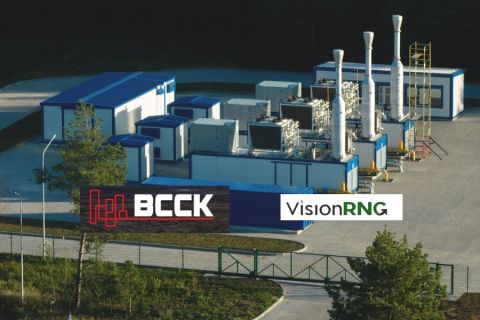The natural gas shale gale that has dramatically transformed the outlook for U.S. energy supplies is also having profound economic impacts, according a new IHS Global Insight study.
Shale gas production has more than doubled the size of the discovered natural gas resource in North America—enough to satisfy more than 100 years of consumption at current rates.
As a result, the energy trend is creating jobs, reducing consumer costs of natural gas and electricity, stimulating economic growth and bolstering federal, state and local tax revenue. And shale gas production supported more than 600,000 jobs in 2010—a number that is projected to grow to nearly 870,000 by 2015.
The Economic and Employment Contributions of Shale Gas in the United States tracks the long-term economic impact of U.S. shale gas production and presents the economic contributions of shale gas by considering jobs, economic value and forecasts of government revenues through 2035, as well as the broader macroeconomic impacts on households and businesses.
“The rapid growth in shale gas production—currently 34% of total U.S. production—is one of the most significant energy developments in recent decades and is having a significant impact on the nation's economy in terms of stimulating job creation and economic growth,” says IHS vice president John Larson, the lead author of the study.
Among the study's key findings are that shale gas had grown to represent some 27% of U.S. natural gas production by 2010. It will reach 43% in 2015 and more than double by 2035 to 60%.
Other finding shows that nearly $1.9 trillion in cumulative capital investments are expected to be made between 2010 and 2035. Annual capital expenditures, especially strong in the early years, will grow to $48.1 billion in 2015.
The shale gas contribution to the U.S. gross domestic product (GDP) was more than $76.9 billion in 2010. In 2015 it will be $118.2 billion and will triple to $231.1 billion in 2035
During the next 25 years, the shale gas industry will generate more than $933 billion in tax revenues for the local, state and federal governments. And savings from lower gas prices, as well as the associated lower prices for other consumer purchases, equate to an annual average addition of $926 in disposable income per household between 2012 and 2015, and increase to more than $2,000 per household in 2035 on an annual basis.
A key reason for the shale gas industry’s profound economic impact is its high employment multiplier—the indirect and induced jobs created to support an industry. For every direct job created in the shale gas sector, more than three indirect and induced jobs are created, a rate higher than the financial and construction industries, the report finds.
“Shale gas combines a capital-intensive industry with a broad domestic supply chain,” Larson says. “The U.S. is a leader in all parts of the shale gas industry, which means that most of its suppliers are domestically based, and that means a larger portion of the dollars spent are supporting domestic jobs in trucking, steel fabrication, aggregates, heavy equipment manufacturing, hotels, and restaurants, among others.”
The study also finds that shale gas and related jobs pay higher wages on average, about $23.16 per hour, than those paid to workers in manufacturing, transportation and education.
The IHS study measured the broader impact of low natural gas prices, finding that during the 2010 to 2035 period prices on average would be at least two times higher absent shale gas production. The lower natural gas prices have resulted in a 10% reduction in electricity costs nationally, which can lead to lower prices for other consumer purchases.
Low gas prices also boost the international competitiveness of domestic manufacturers, resulting in 2.9% higher industrial production by 2017 and 4.7% higher production by 2035, according to the study.
“Absent the added supply from shale gas production, large volumes of LNG imports would be required and U.S. consumers would be paying European or even Asian prices, which are two to three times what they are today here in the U.S.,” Larson says. “The benefits of that savings reverberate through the wider economy.”
Among those who developed IHS Global Insight's expertise in this area was Nobel laureate in Economics Lawrence Klein. The study was commissioned by America's Natural Gas Alliance (ANGA).

Recommended Reading
Solar Panel Tariff, AD/CVD Speculation No Concern for NextEra
2024-04-24 - NextEra Energy CEO John Ketchum addressed speculation regarding solar panel tariffs and antidumping and countervailing duties on its latest earnings call.
NextEra Energy Dials Up Solar as Power Demand Grows
2024-04-23 - NextEra’s renewable energy arm added about 2,765 megawatts to its backlog in first-quarter 2024, marking its second-best quarter for renewables — and the best for solar and storage origination.
BCCK, Vision RNG Enter Clean Energy Partnership
2024-04-23 - BCCK will deliver two of its NiTech Single Tower Nitrogen Rejection Units (NRU) and amine systems to Vision RNG’s landfill gas processing sites in Seneca and Perry counties, Ohio.
Clean Energy Begins Operations at South Dakota RNG Facility
2024-04-23 - Clean Energy Fuels’ $26 million South Dakota RNG facility will supply fuel to commercial users such as UPS and Amazon.
Romito: Net Zero’s Costly Consequences, and Industry’s ‘Silver Bullet’
2024-04-22 - Decarbonization is generally considered a reasonable goal when presented within the context of a trend, as opposed to a regulatory absolute.





